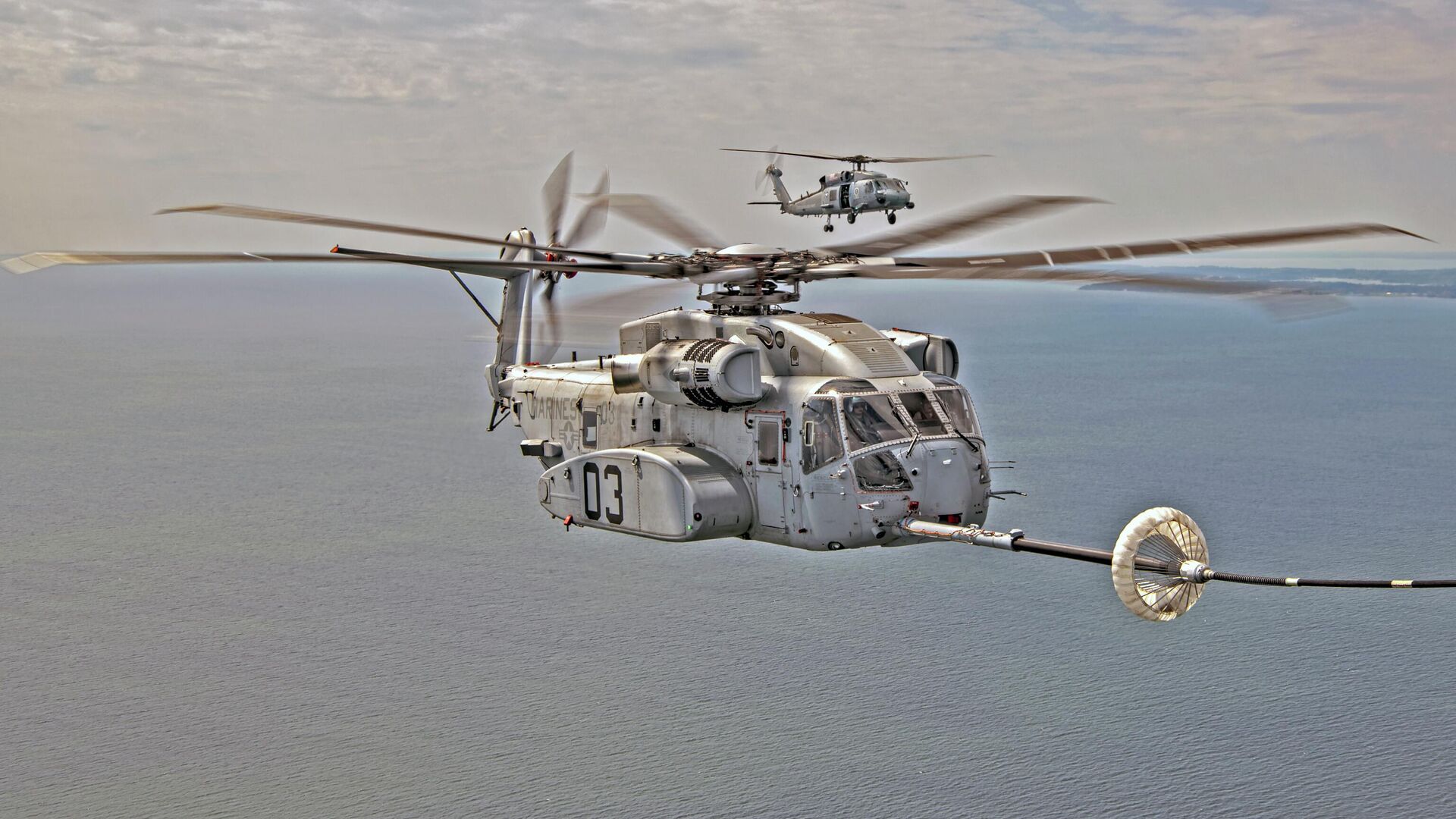US Marine Corps Declares Delayed Heavy-Lift King Stallion Helicopter Operational
Subscribe
After years of delays, SIkorsky’s CH-53K King Stallion helicopter has been declared operational by the US Marine Corps (USMC). The heavy-lift chopper is expected to play a key role in the Corps’ restructuring plan directing it away from the heavy land-based combat of the early 21st century.
Lt. Gen. Mark Wise, the USMC’s deputy commandant for aviation, announced on Monday that the King Stallion had completed its initial operational test and evaluation (IOT&E) period, with more than 3,000 mishap-free hours of flying.
“My full confidence in the CH-53K’s ability to execute the heavy-lift mission is the result of successful developmental and operational testing conducted by Air Test and Evaluation Squadron (HX) 21 and Marine Operational Test and Evaluation Squadron (VMX) 1,” Wise said in a news release.
The ultra-powerful helicopter is an improvement over the CH-54E Super Stallion, boasting redesigned engines that produce 57% more horsepower with 63% fewer parts. It can lift a maximum weight of 27,000 pounds up to 110 nautical miles - about three times what its predecessor was capable of. Hovering, the King Stallion has proven capable of lifting 36,000 pounds.

A Sikorsky CH-53K King Stallion with Marine Operational Test and Evaluation Squadron 1 conducts a lift of an external cargo load during a cargo loading and transporting exercise at Marine Corps Air Ground Combat Center, Twentynine Palms, California, Aug. 24, 2021.
The Super Stallion is itself an upgraded version of the Sea Stallion helicopter, which first flew nearly a half-century ago and has filled a wide variety of roles since, ranging from submarine hunter to cargo hauler and search and rescue missions.
However, the King Stallion’s path to operational status has been fraught with delays, thanks to several design flaws that required correction, including the engine ingesting its own exhaust, a short life span for parts of the main rotor gearbox, and deficiencies with its tail rotor and driveshaft.
The most recent estimate, in June 2021, suggested the price for each King Stallion could be $125 million - almost 1.5 times the cost of the infamously expensive F-35 stealth fighter. Still, that’s lower than the $138 million per helo anticipated in 2018.
That heavy lifting power is vital to the Pentagon’s plans for restructuring the Marine Corps. First pitched two years ago, the plan now known as “Force Design 2030” calls for reorienting the UMSC away from the heavy land-based combat in which it was often used during the US War on Terror, and toward an amphibious and naval role. The pivot has accompanied Washington’s shift toward great power competition with Russia and China, and the USMC’s new role is ideal for facing China’s numerically superior naval force and operations on the strings of islands off the east coast of Asia.
The early stages of those operations, according to the Corps, would include what it calls Expeditionary Advance Base Operations (EASO), an extension of the Forward Operating Base (FOB) concept applied to amphibious warfare. Mobile anti-ship and anti-air missile systems, hoisted by King Stallion helicopters, would be lifted off warships like the USMC’s amphibious assault ships and carried to shore on the islands, quickly setting up “no go zones” for Chinese aircraft and warships.
Earlier this month, Col. Jack Perrin, the heavy-lift helicopter program manager at Naval Air Systems Command, told reporters that the King Stallion is expected to enter full-rate production at Sikorsky by fiscal year 2023. According to the UMSC release, the Corps plans to deploy the first CH-53K Marine Expeditionary Unit (MEU) detachment the following year.

